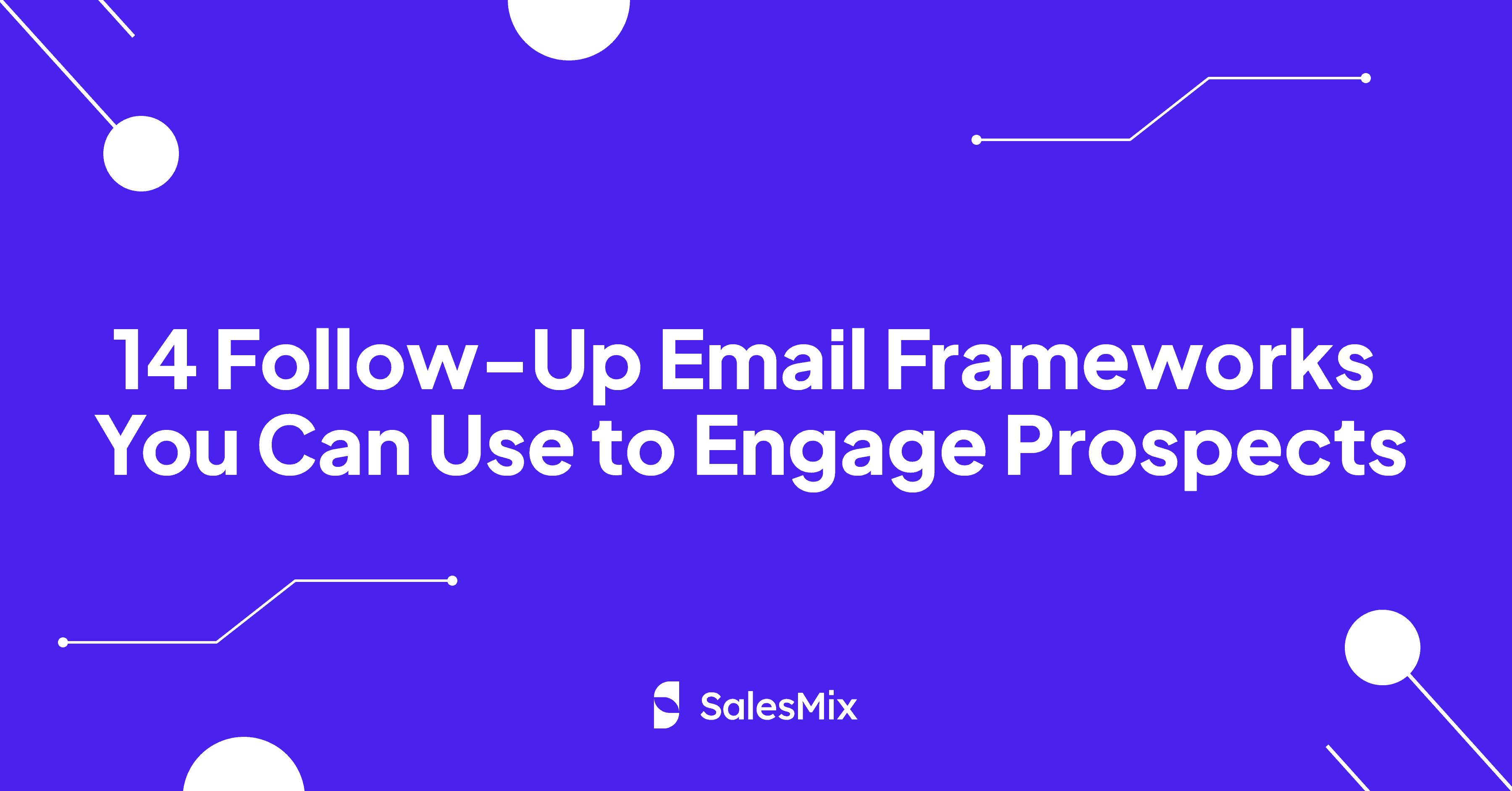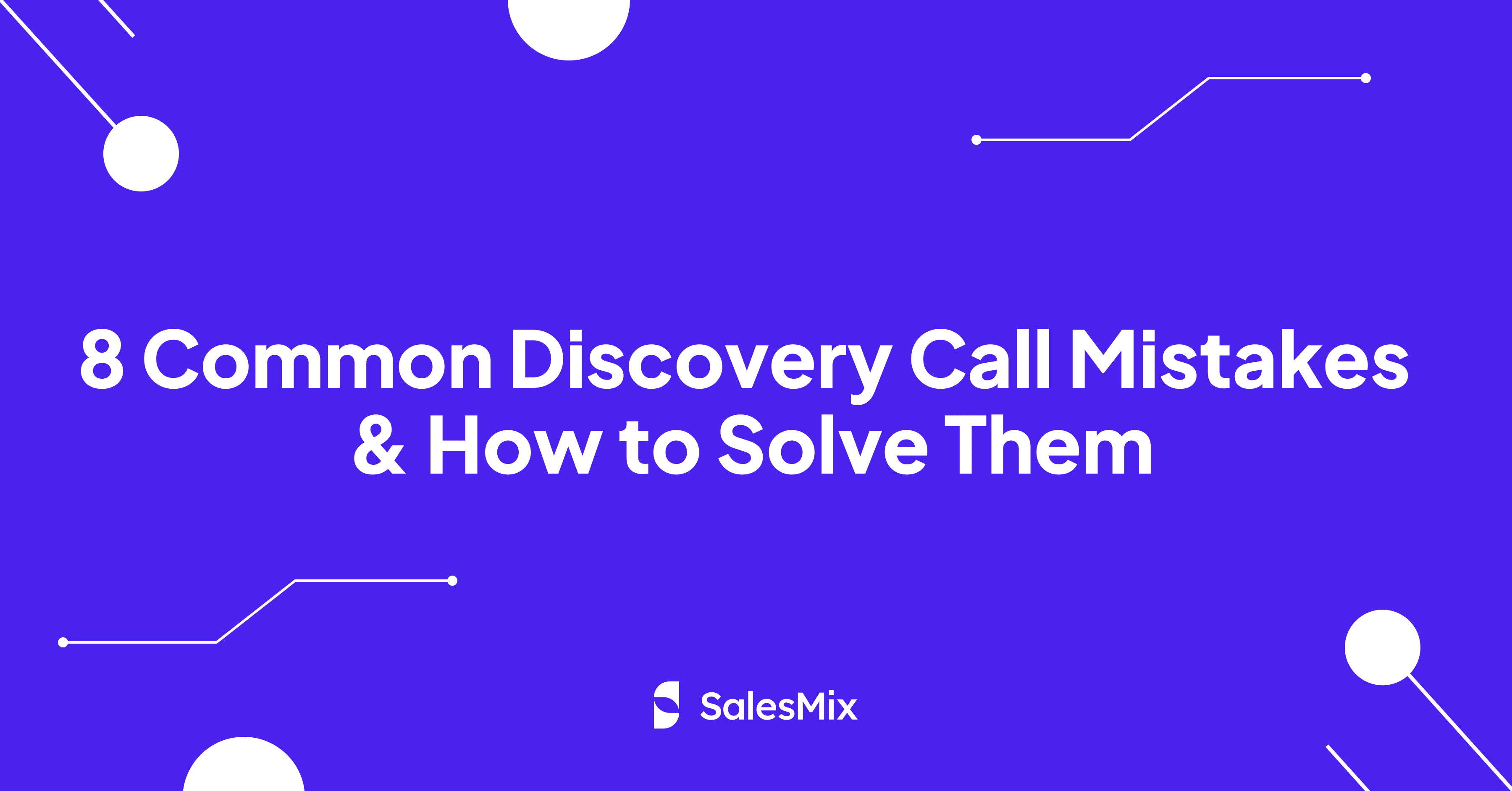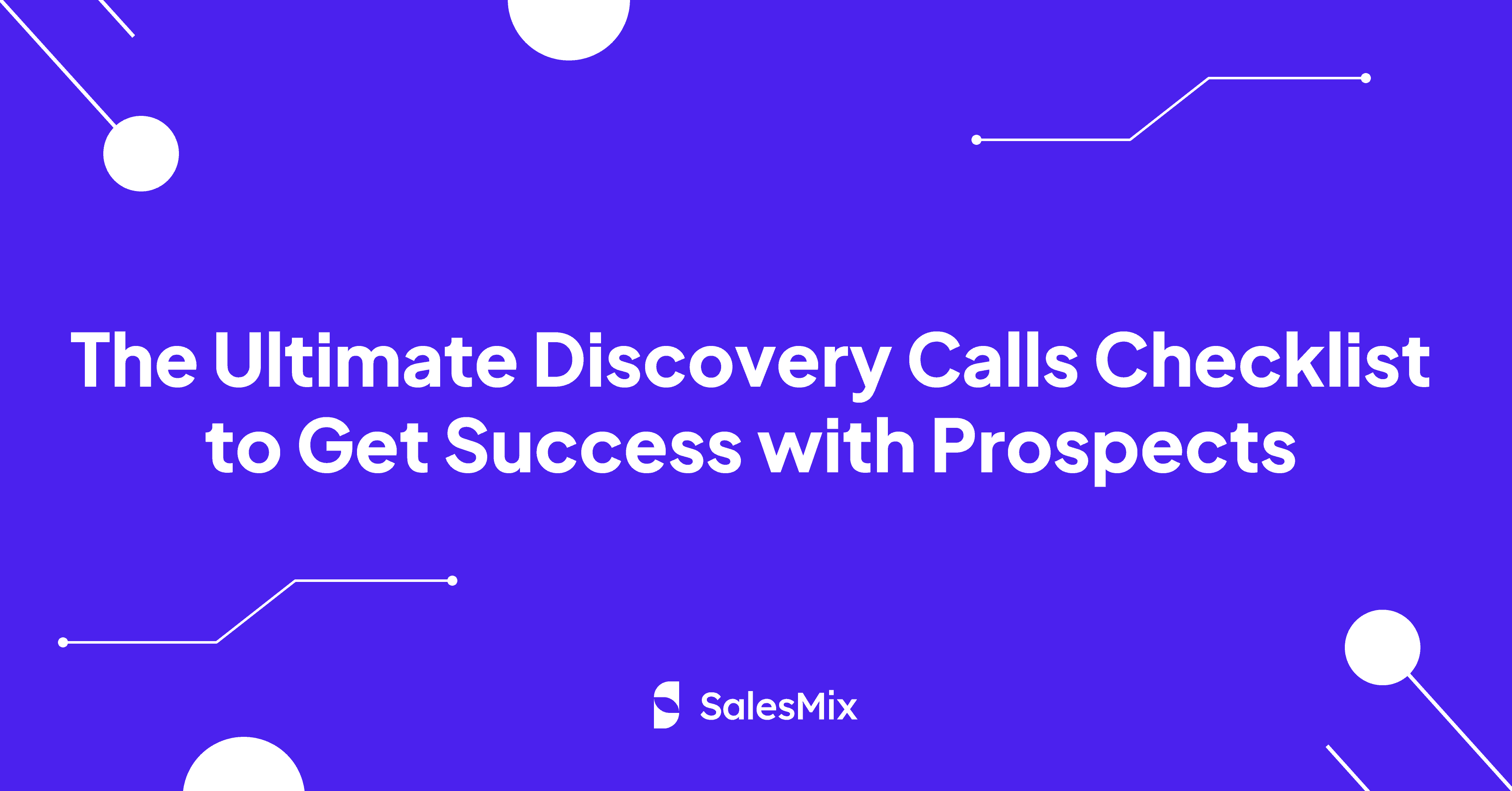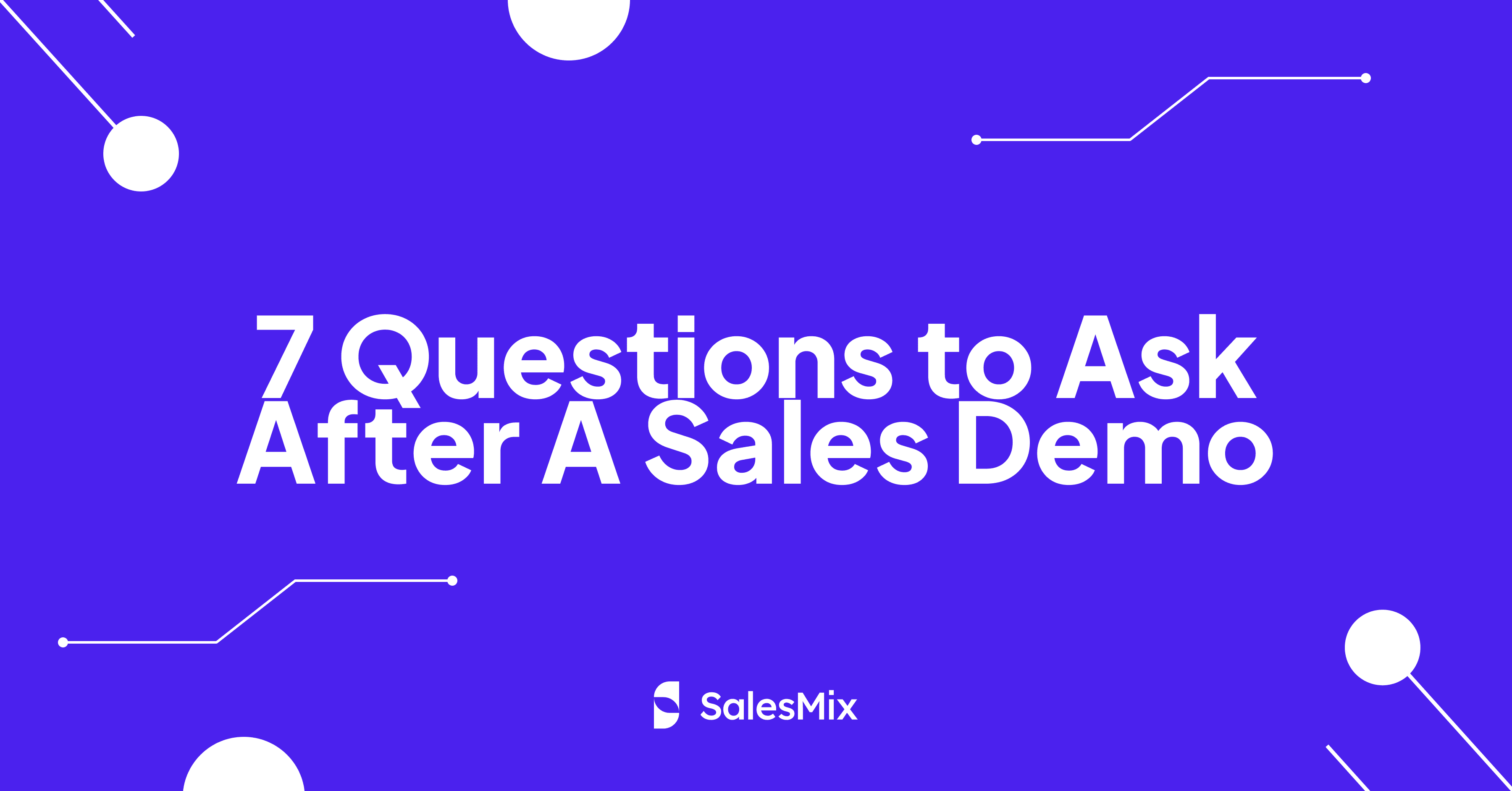Table Of Contents
14 Follow-Up Email Frameworks You Can Use to Engage Prospects
Follow-up emails are where you can win or lose a deal. However, sending the bump emails can feel tricky. You don’t want to come across as pushy, but you also don’t want to fade into the background. That’s why having solid follow-up email frameworks is so important.
The key is to make your follow-ups feel purposeful and worth opening. Every email should answer the unspoken question: “Why should I care?” Whether it’s sharing a resource, asking a thoughtful question, or simply clarifying the following steps, the goal is to show that you’re paying attention and that your outreach is about them – not just hitting your quotas.
I will go over the 14 proven follow-up email frameworks that can help you eliminate the guesswork in follow-ups and make the outreach engaging for your prospects.
1. Trigger > Top of mind > CTA Follow-Up Email Frameworks
This follow-up email approach is a strategic framework designed to capture attention, build relevance, and drive action in a streamlined manner.
Example:
Hey Abdul,
Given its Q4, I thought financial planning would be at the top of my mind.
Did you have any feedback on my last email?
Trigger > Top of mind > CTA follow-up email frameworks
Why it performs well:
– Uses a timely trigger.
– Addresses a relevant and current concern.
– Invites feedback, encouraging engagement.
2. External resource > CTA
You can use this approach to provide your prospects with value upfront while guiding recipients toward action that will engage them with your outreach efforts. We’ll look into two examples of this approach.
Example 1:
Hey Tom – 78% of CFOs said that having their expenses under control is a top priority for 2024.
[insert image of the report or not]
Is that something you’re struggling with as well?
Why it performs well:
– Provides a relevant statistic.
– Engages the recipient with a question.
– Offers an external resource for validation.
Example 2:
Hey Tom – 78% of CFOs said that they are going over budget in regards to expense management.
[insert image of the report or not]
Is that something you’re struggling with as well?
PS: We helped XYZ Company achieve [specific result] in [timeframe].
Why it performs well:
– Provides a relevant statistic.
– Engages the recipient with a question.
– Adds social proof to build credibility.
3. Reminder > Value > CTA
This is one of those valuable follow up email frameworks which gently nudge your prospects while reinforcing why they should take action.
Example:
[name] – Last month, we talked about redesigning your customer onboarding process. You mentioned that reducing churn in the first 90 days was a key goal.
I’ve got some new data on how our solution has helped similar companies reduce early churn by 34%.
Would you like to review these findings together?
This is how it would look like –
Reminder > Value > CTA framework
Why it performs well:
– References a previous conversation to build continuity.
– Provides new, relevant information.
– Ends with a call-to-action for further engagement.
4. Trigger > Focus > CTA
The “Trigger > Focus > CTA” follow-up email approach is a targeted strategy to engage recipients by addressing their immediate needs while guiding them toward a clear next step.
Example:
Hey Tom, you [relevant trigger]
Usually, that means a focus on [specific action]
Is that the case for you?
Why it performs well:
– Starts with a relevant trigger.
– Directs focus to a specific action.
– Engages the recipient with a question.
5. Statement > Visual > CTA
You can use this approach as a compelling strategy to grab attention, simplify understanding, and drive action to engage your prospects.
Example:
Here’s a visual, Tom:
[image of something relevant *(expenses report, COI, relevant article, feature launch, G2 reviews, etc)*]
Would this be helpful for your expense management?
Best
Why it performs well:
– Starts with a strong statement.
– Uses a visual element to capture attention.
– Ends with a relevant question to engage the recipient.
6. Attention > CTA
The “Attention > CTA” follow-up email approach is a direct and impactful strategy that helps you quickly capture the recipient’s focus and drive immediate action.
Example:
Hey [Name],
Last week, you mentioned finding that “special someone” for your Account Executive role was crucial for hitting your Q1 revenue goals.
Wanted to circle back and see if it makes sense to explore how we could potentially help you achieve that 25% faster than your current process.
Thoughts?
Your follow-up email will look like this –
Attention > CTA framework
Why it performs well:
– References a previous conversation to build continuity.
– Highlights a critical goal.
– Offers a specific benefit.
– Ends with a call-to-action for engagement.
7. Question > Video > CTA
You can use this highly effective strategy to create meaningful connections and drive engagement from your prospects through a combination of curiosity, visual appeal, and actionable clarity.
Example:
How does this < 1 min video compare to how you’re currently controlling your expenses, Tom?
[Insert video caption]
Think this could help?
Why it performs well:
– Starts with a question to engage the recipient.
– Provides a visual/video element for clarity.
– Ends with a question to encourage a response.
8. Attention > Interest
This framework is a concise and persuasive strategy designed to captivate the recipient and spark curiosity.
Example:
[Name] – thought you’d find this useful: [Article Name]. It gives you a few ideas on how to build a kick-ass company culture.
My favorite one is tips for retaining 80% of the hires. Something that is a challenge for many companies.
Best,
Why it performs well:
– Captures attention with a useful resource.
– Shares personal insight to build rapport.
– Ends with a positive note.
9. Trigger > Insight > CTA
It is a structured and effective way to engage recipients by leveraging context and delivering value.
Example:
[Name] – since [Company] is growing its sales department, figured you’d like to see this: “3 ways to decrease ramp-up time”
This is the technique we apply to help companies like yours to help new hires perform at 100% capacity in half of the time.
Worth a chat?
Cheers,
Why it performs well:
– Starts with a relevant trigger.
– Provides useful insight.
– Ends with a clear call to action.
10. Advice > Article
This follow-up email framework comes into your aid by letting you offer value to the recipients to build trust and provide actionable insights.
Example:
[Name] – X article explains how [specific action] has [X benefit]. Did you know that B2B businesses in Europe save/achieve [X money/result] per year by doing this?
Here’s the article link
Cheers,
Why it performs well:
– Offers practical advice.
– Supports with a relevant article.
– Provides an interesting fact to engage the recipient.
11. Insight > Result > PS
It is a concise and results-driven method that combines value and actionability to engage your prospects with your outreach efforts.
Example:
[Name] – I noticed your company’s been expanding into new markets. Have you considered [X specific] strategy?This is great to [achieve X result]
Here’s how [company] did that & increased their market share by 10% in those new markets.
Worth checking this out
PS: [more details about it here]
Why it performs well:
– Provides useful insight.
– Highlights a specific result.
– Ends with a call-to-action and a PS for additional info.
12. Social proof > Attention
You can pair evidence of success with a personalized hook in this approach to effectively build interest and trust simultaneously among your prospects.
Example:
[Name] – here’s how [Company] increased their conversion rates by X% through [specific action]. Given your recent focus on improving [process], I thought you’d find it interesting.
Link to details here.
Best,
Why it performs well:
– Uses social proof to build credibility.
– Captures attention with a relevant success story.
– Provides a link for more details.
13. Content > Case Study
The Content to Case Study follow-up email framework is a powerful way to educate and inspire action by combining value-driven insights with real-world results.
Example:
Hey [name]
Given ramp speed was a priority for you, I thought this would be worth discussing.
Here’s a quick breakdown of how we helped ACME and halved their ramp time.
Worth a chat?
[Link to case study]
Why it performs well:
– Addresses a known priority.
– Provides a relevant case study.
– Ends with a call-to-action and a link for more details.
14. Context > Clarify
This follow-up email approach is a straightforward and professional way to reconnect with recipients by addressing their specific situation.
Example:
Hey [name]
Given that ramp speed was a priority for you, I thought this would be at the top of your mind.
To clarify, we’ve built a program for your reps. it can be completed & reviewed at their open pace.
Reps ramp faster, and you know they can get consistent results when they have the systems in place.
Think this could help your team?
Why it performs well:
– References are a known priority.
– Provides clear context and clarification.
– Highlights benefits and ends with a question to engage the recipient.
Conclusion
Crafting follow-up emails that genuinely engage prospects is both an art and a science. You need to show your prospects that you understand their needs, respect their time, and offer real value. Our discussed follow-up email frameworks provide a structured way to approach follow-ups to make your outreach meaningful.
The beauty of these strategies lies in their adaptability. Whether you share insights, provide resources, or highlight proven results, each framework can be tailored to align with your prospect’s priorities and unique value proposition. Focus on relevance and being intentional with every touchpoint, and position yourself as a partner, not just another salesperson.






